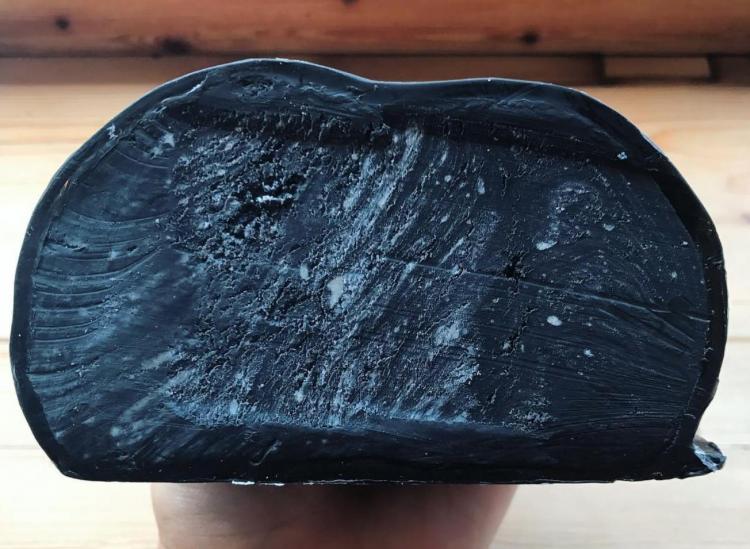8 Bizarre Cheeses Around The World

@lovecheeseyork
Cheese plays a significant role in the culinary fabric of most cultures. Whether it’s a creamy brie, nutty manchego, sharp cheddar, pungent gorgonzola, smokey gouda, crumbly halloumi or creamy mozzarella, we just can’t seem to get enough cheese.
Now, even though it’s savored throughout the world, there are some cheesy creations that’ll make you say, “What the actual f*ck?” Here are eight bizarre kinds of cheese that take dairy to an entirely new level of weird.
1. Yak Cheese
Yak cheese — from an animal that’s about as big as a cow, but gives milk in smaller amounts like a goat — is described by dairy expert Jonathan White as rich, sweet and fragrant. Food & Wine notes that most yaks drink pure water, breath clean air and eat mainly wildflowers. Living a good life in the mountains of Tibet, yaks have a relaxing lifestyle so it’s no wonder these animals would produce clean, herbal-tasting cheese. Yak cheese also contains higher levels of omega-3 fatty acids and is known for its potential health benefits because of the animal’s natural and free-range diet.
2. Époisses
Époisses is a pungent, soft, paste-like cow’s milk cheese produced in Burgundy, France. It’s known for being so stinky that it was banned from public transportation vehicles all over France. It has a distinctive soft red-orange color and it’s made from either pasteurized or raw milk. It’s often served with a spoon because of its intensely creamy texture. A number of producers make époisses, but the most well-known company is Berthaut, which sells the small wheels of cheese, washed with brandy, in wooden boxes.
3. Pule
Pule is a crumbly white cheese made from the milk of Balkan donkeys from Serbia. A staple of Serbian cuisine, pule has been reported to be the “world’s most expensive cheese.” It goes for about €1,000 per kilogram, which is just over $1,170 for 2.2 pounds. Pule is extremely rare. It takes 25 liters (about seven gallons) of donkey milk to make just two pounds of this crumbly, smoked cheese.
4. Casu Marzu
The name casu marzu translates to “rotten and putrid cheese” in Sardinian, and this sheep’s milk cheese actually contains larvae. (Appetizing.) Casu marzu comes from pecorino cheese and goes way past the point of typical fermentation to a stage of decomposition. The larvae are purposely introduced to the cheese to break down all of its fat. The resulting texture is soft with a little liquid, and it has a strong, pungent and burning taste. In Sardinia, where it’s sold on the black market, casu marzu is served with a thin, crisp flatbread and red wine.
5. Vieux Lille
Known as “Old Stinker,” vieux lille is one of the strongest smelling cheeses in the world. If the nickname isn’t enough, the icon used for this strong-smelling cheese from Northern France is a man in a gas mask. Vieux lille has a pungent odor and a strong, salty flavor. Bravery is a must if you’re going to try this one.
6. Airag Cheese
View this post on Instagram
Sorry, horseback riders. Airag, also called kumis or ayrag, is a fermented creamy cheese made from the raw milk of a female horse. The milk is a traditional drink for people in Mongolia and Turkey. (It can be mildly alcoholic, but you’d need to drink a ton of it to feel its effects.) The taste of the horse milk can be sour, which is why it’s used to make the cheese as well as yogurt.
7. Camel’s Milk Cheese
Camel’s milk has supported Bedouin and nomad cultures ever since camels became domesticated. It’s how herders survive long periods in the desert. Compared to cow’s milk, camel’s milk is low in fat and cholesterol, so the yield of cheese is lower. A company in Dubai called Camelicious began selling camel’s milk cheese commercially in 2013.
8. Charcoal Cheese
The Great British Charcuterie Co. sells a jet-black creamy cheese called charcoal cheddar. It’s made with charcoal from the mines in Yorkshire and mixed with a creamy, wax-coated cheddar. While ash coatings aren’t necessarily new, which are meant to enhance flavor and add a smoky undertone, this is the first cheese to actually incorporate charcoal into the cheese itself.











